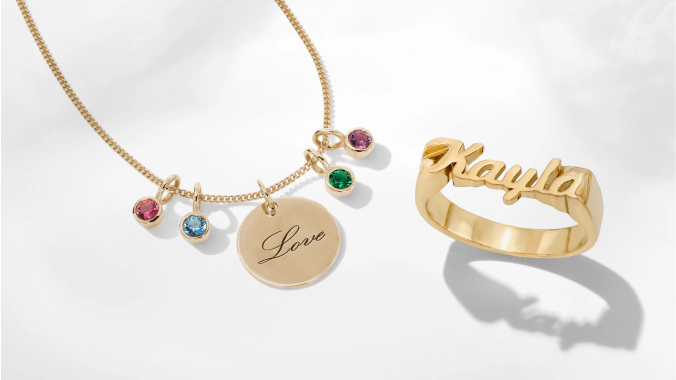No products in the cart.
The diamond industry has been the subject of intense scrutiny in recent years, with concerns surrounding ethical and environmental issues. One of the primary methods of addressing these concerns is through diamond traceability, which is the ability to track a diamond’s journey from mine to market. While traceability is often associated with lab-grown or synthetic diamonds, questions still remain about whether natural diamonds can be traced. IIG will explore the topic of natural diamond traceability, including the advancements in technology.
Diamonds have been celebrated for their beauty and rarity for centuries. The industry started in India, where diamonds were first mined over 2,000 years ago. In the 1700s, diamond mines were discovered in Brazil, and in the 1800s, South Africa became the centre of the diamond trade. Today, the majority of diamonds are sourced from countries such as Russia, Botswana, Canada, and Australia. The modern diamond industry has evolved significantly and is now a multi-billion dollar global industry.
The diamond supply chain is complex and involves multiple players. The journey of a diamond begins with mining, where diamonds are extracted from the earth. The diamonds then go through a process of sorting, cutting, and polishing before they are sold to diamond dealers. The dealers then sell the diamonds to wholesalers, who sell them to retailers or manufacturers. The retailers then sell the diamonds to consumers.
The diamond supply chain involves multiple players, including mining companies, diamond cutters and polishers, diamond dealers, wholesalers, retailers, and consumers. Each player in the supply chain has a specific role to play in the process of bringing a diamond to market.
Tracing the journey of a diamond from mine to market has become increasingly important in the diamond industry. The industry has been associated with human rights abuses and environmental degradation, and traceability has become a way to ensure that diamonds are ethically and sustainably sourced.
Traceability has become important from a consumer perspective, as people want to know the origin of the diamonds they purchase. As consumer awareness grows, so does the demand for ethical and eco-friendly diamonds. The diamond industry has responded by developing new certification programs and standards that focus on sustainability and ethical mining practices. These programs promote the use of natural diamonds that are tracked from the mine to the consumer.
Many diamond companies have responded to the demand for ethical and eco-friendly diamonds by adopting more sustainable mining practices. This includes using renewable energy, reducing water usage, and minimizing the environmental impact of mining. It is possible to guarantee that it was mined responsibly and without contributing to conflict or environmental damage.
Technology has played a significant role in advancing diamond traceability. New technologies have made it possible to track diamonds from the mine to the market, providing transparency and accountability. Technologies have helped to ensure that diamonds are ethically and sustainably sourced.

Despite the challenges of tracing natural diamonds, there are several methods that can be used to ensure their traceability. There are several technologies that have been developed to trace diamonds, including certification programs, blockchain, laser inscriptions, and radio-frequency identification (RFID) tags. Blockchain technology is particularly promising, as it allows for the creation of an immutable ledger that can track the ownership and movement of diamonds. Laser inscriptions and RFID tags are also useful in tracking the journey of a diamond from mine to market.
The diamond industry must continue to prioritize traceability to ensure that consumers can trust the diamond supply chain.
 What is blockchain technology?
What is blockchain technology?Blockchain technology shows great promise for tracking diamonds, as it offers a transparent and unalterable record of a stone’s journey. Blockchain technology can provide an immutable ledger of a diamond’s journey, from its origin in the mine to its final destination. By using blockchain technology, diamond companies can ensure that each diamond is tracked and that the data cannot be altered.
 Consumer’s role in traceable diamonds?
Consumer’s role in traceable diamonds?Consumer demand for ethically and sustainably sourced diamonds is likely to continue to grow, enabling the industry to adapt and provide transparent and traceable supply chains. It will continue to influence the diamond industry and the industry will need to adapt and provide a transparent and traceable supply chain.
Diamond companies that prioritize transparency and traceability will be the ones that thrive in the future.
Consumers can ensure that the diamonds they purchase are traceable by asking their jeweller for information on the diamond’s origin and journey. Many jewellers now offer traceable diamonds and can provide information on the diamond’s certification and traceability.


In conclusion, while natural diamond traceability presents a number of challenges, advancements in technology are making it increasingly possible. Ethical considerations and the desire for eco-friendly practices are driving consumer demand for traceable diamonds. As technology continues to improve, the future of diamond traceability looks promising.
Visit the fastest-growing premier Education Institute of the Gems and Jewellery Industry at our pan-India locations including Mumbai & Surat.
We are easily accessible on Instagram, Facebook, LinkedIn and Twitter @iigofficial






Not a member yet? Register now
Are you a member? Login now